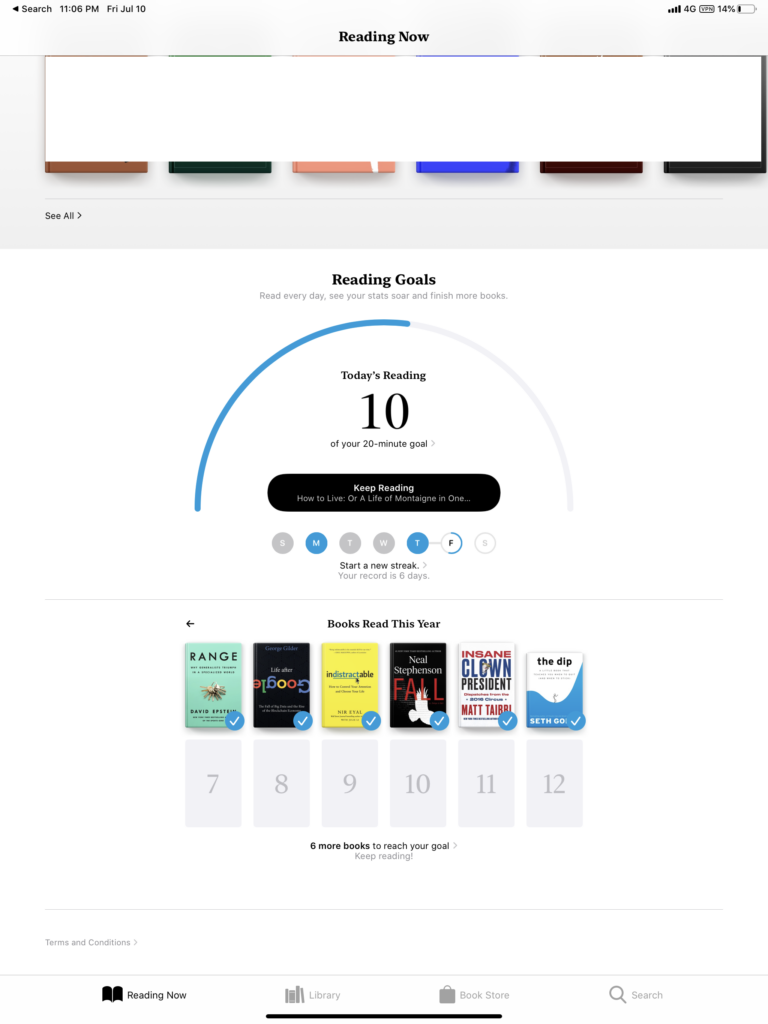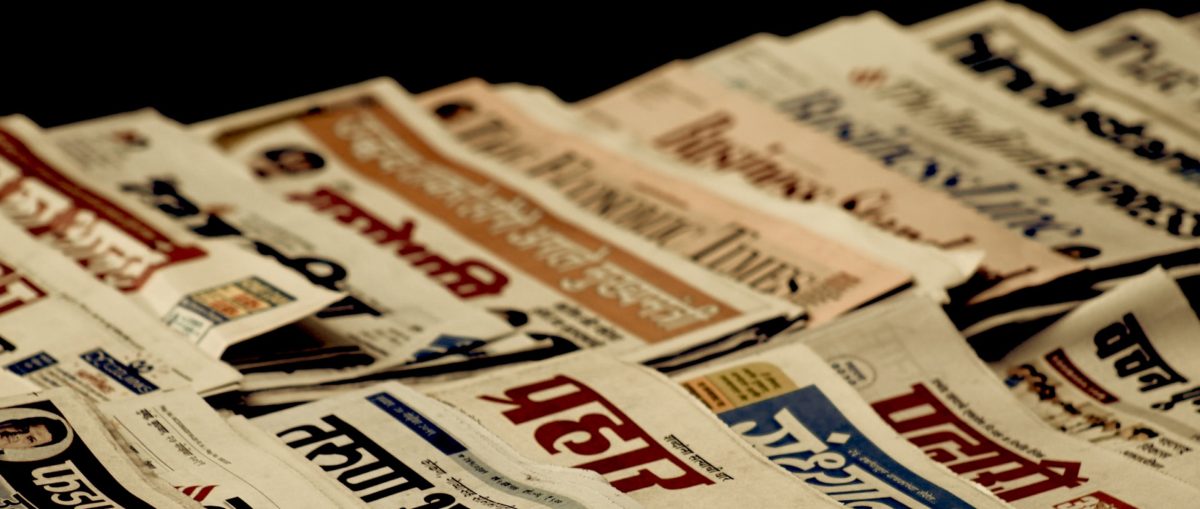This blog post about building habits by breaking actions down to two-minute first steps:
Whenever you find it hard to get started on a task, consider scaling it down into a 2-minute version. For example… Read a book → Read one page, Write an essay → Write one sentence… Do 100 push-ups → Do 1 push up, Eat more vegetables → Eat an apple
I agree. I’m drawn to apps and software that make it easy to take first iny first steps. Apple’s iOS Books app is one such. In fact, we have written about this before:
You can set a daily reading goal – I’ve set it to twenty minutes, even though I will get a little more done every day. The app then tracks this as you read over the day, and sends you a notification when you’re hit it… The app then logs streaks for the number of days that you’ve hit this goal. You can see this in the large screenshot at the top. For me, streaks are highly motivating.
This is the screenshot I was referring to. You can see progress towards a daily goal as well as the streak right below it.

If you want to build up a reading habit, this can be very helpful. You can set your daily reading goal to as low as you like – even the two minutes that the blog post talks about.
You can set a phone reminder that goes off in the morning, or when you’re winding down, to get your two minutes of reading done.
The Fitbit’s gentle nudge to walk at least 250 steps every hour is another example. Fitbit calls this Reminders to Move. 250 steps isn’t much, but if you do it during the course of a 8 hour workday it adds up to 2000 steps. And keeps you from sitting idle for extended periods of time.
I wish more apps were designed with healthy habit formation in mind as opposed to being heavily optimized for constant, mindless usage.


